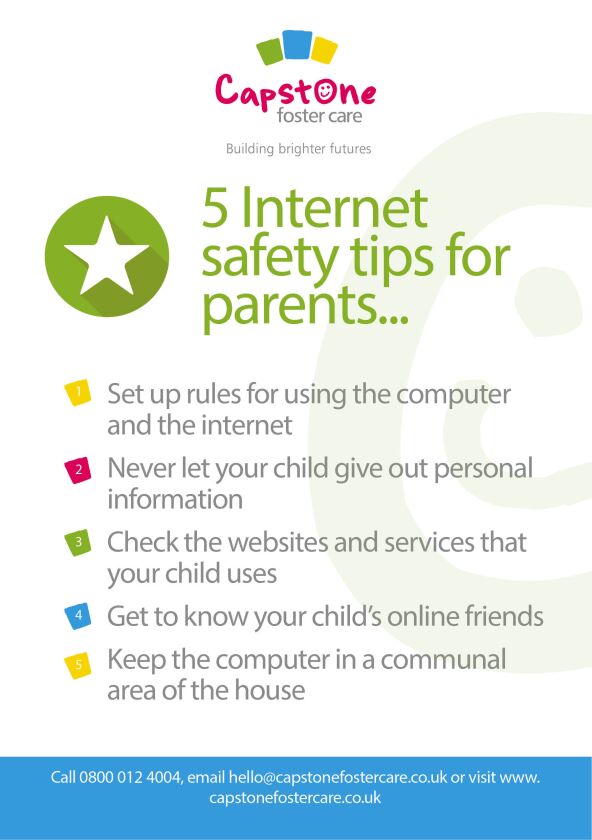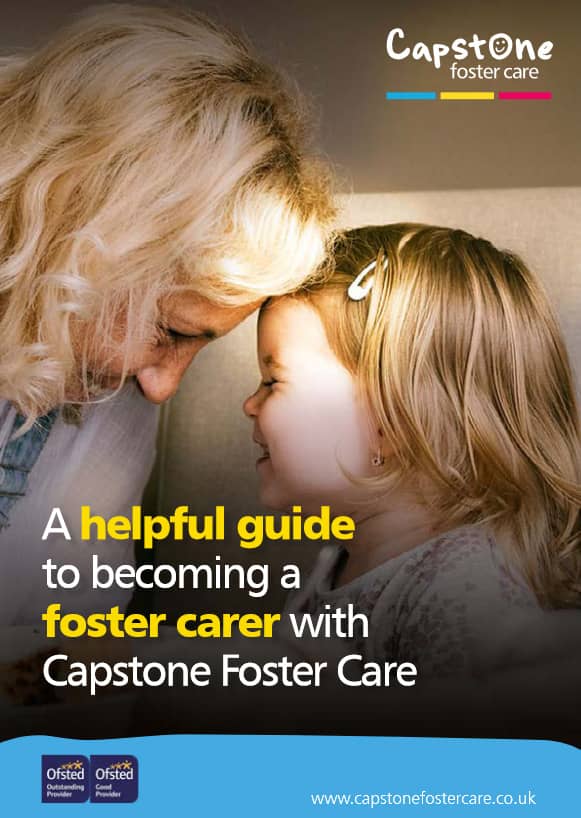


Fostering a disabled child
The role of an independent fostering agency
How to choose a foster care agency
Can I choose who I foster?
What are the benefits of fostering with an independent fostering agency?
What happens when a child is taken into care?
Fostering process: what happens on an initial home visit?
Fostering with local authority vs independent agency
A complete guide to becoming a foster carer
How Are Children in Foster Care Matched with Carers?
Foster Care Budgeting Tips
Becoming A Foster Carer
What is a Care Leaver?
What is a Foster Carer?
Fostering Regulations
How long does it take to become a Foster Carer?
What are the Foster Care requirements?
Changing IFA - Transferring to Capstone
8 reasons why a child may be taken into care
Fostering as a Career
Can you foster if you smoke or vape?
A guide to fostering assessments
LGBTQ+ Fostering
Equality, Inclusion & Anti-discriminatory Practice in Foster Care
What can disqualify you from foster care?
Can you foster if you’re on benefits?
Top transferable job skills to become a foster carer
Fostering as a same sex couple
Fostering while renting
Can you foster if you have mental health issues?
Is there an age limit for fostering in the UK?
Do foster carers get a pension?
How to foster a child: A step by step guide
How do DBS Checks Work?
Can I foster if...?
Mythbusting the top 10 Foster Care Myths
Can I foster if I am disabled?
LGBT Fostering Mythbusting
Can I foster if I have pets?
Can I Foster A Child?
Can I Foster and Work?
Can you Foster with a Criminal Record
Can Single People Foster?
LGBT Family and Foster Care
Fostering across Cultures
Muslim Fostering
Christian Foster Care
Sikh Fostering
Empty Nest Syndrome and Foster Care
Can I Foster?
What is the difference between residential care and foster care?
Fostering Babies and Young Children
What is Kinship Care?
Fostering Babies - Myths
Focusing on Parent & Child Fostering
Fostering Siblings
Fostering Teenagers
Fostering Teenagers - Breaking down the Myths
Fostering Unaccompanied and Asylum Seeking Children
Mother and Baby Foster Placements
Private Fostering
How does therapeutic fostering work?
Young Children Fostering Placements
Difference between short and long-term fostering
Types of self-harm
A Guide to the Foster Care Handbook
Reunification and Birth Parents: A Guide for Foster Carers
What is an EHC Plan? A Guide for Foster Carers
How to prepare a child for becoming a care leaver
Children who foster: impact of fostering on birth children
Fostering LGBTQ+ Youth
How to prepare your home for a foster child
How to help a lonely child: A Guide for Foster Carers
What are the National Minimum Standards for Fostering Services?
10 tips for foster children's education
How to prepare your foster child for secondary school
Tips for coping when foster placements end
Tips for foster parents during Coronavirus
What happens if foster parents get divorced?
5 ways to manage Mother's Day with foster children
Tips for managing foster children's bedtime routines
How to handle foster child bullying
Fostering allowances and the gender pay gap
What discounts can foster carers get?
How to adopt from Foster Care
5 ways to manage Father's Day for children in foster care
8 most common fostering challenges
FosterTalk Membership with Capstone Foster Care
Supporting foster children's contact with birth families
A guide to independent fostering
Keeping Children Safe Online: A Guide For Foster Carers
Movies About Foster Care
Play-based learning strategies for foster carers
A Guide to the Staying Put Program
How to deal with empty nest syndrome
How to recognise signs of depression in foster children
Can you take a foster child on holiday?
Tips and advice on fostering with a disability
10 tips on connecting with your Foster Child
Fostering vs Adoption - What's the difference?
How Fostering can change a future
How to adopt from Foster Care
How to encourage children to read in Foster Care
How to prepare a Foster Child's bedroom
Reading and Storytelling with Babies and Young Children
Supporting Children's Learning
The 20 most recommended books Foster Carers and young people should read
Things you can do when your children leave home
The impact of early childhood traumas on adolescence and adulthood
Anxious Disorders in Foster Children
What is sexual abuse and sexual violence
Foster Child behaviour management strategies
Foster Parent Advice: What to expect in your first year of fostering
Capstone's twelve tips at Christmas
10 celebrities who grew up in Foster Care
Could Millenials be the solution to the Foster Care crisis?
Do you work in Emergency Services?
Form F Assessor and Assessment Training
Foster Care Fortnight
Improving Children's Welfare - Celebrating Universal Children's Day
New Year - New Career - Become a Foster Carer
Young People Charities
Living in the digital age, we understand that it’s not always easy to tell the difference between safe and dangerous activity online. The internet is more accessible than ever and it’s important as a foster parent to understand how to keep your foster child safe online. Our guide explains what risks to be aware of, as well as helpful advice on how to talk to children about what’s appropriate and what’s not online.
Cyber security can seem like a minefield, especially if you are not particularly active online yourself. Here at Capstone Foster Care, our team are on hand to support you 24 hours a day, 7 days a week – our in-house training will help you with the support you need as a foster parent and includes online safety training.
One of the biggest potential dangers to a foster child’s online safety is the risk of grooming. Online grooming can occur in gaming communities, on social media apps, on online chatrooms or forums.
Grooming refers to when an adult creates an emotional connection with a child with unacceptable goals in mind such as sexual contact. Groomers approach children with flattery, bribes, intimidation, or authoritative power to manipulate them. This sort of attention online can lead foster children into dangerous situations where they could feel trapped, scared, embarrassed or alone.
Groomers can typically send lots of messages via messaging apps, on forums and on social media. If your foster child is acting secretive around their phone or messages, it could be a sign of grooming. Often groomers will ask children to keep their conversations secret - especially if they are sending content that is inappropriate.
It’s really important to have an open line of communication between you and your foster child. If your foster child feels comfortable talking to you about any problems they might be having, you’ll be more aware of any inappropriate behaviour that could be directed towards them.
You might want to emphasise that while they might like and trust someone online, sometimes not everyone is who they say they are, and they should never give out personal details to anyone online.
Cyberbullying is a form of bullying that can happen over text or messaging apps, or over social media, forums or online gaming platforms. Cyberbullying can consist of sending or sharing harmful or negative content about someone else. It can be extremely detrimental to your foster child’s sense of wellbeing and security and if it’s not dealt with quickly it can have long-lasting effects.
Some of the ways you can combat cyberbullying include encouraging your foster child to talk to you and be open about any bullying that they might experience.
If your foster child is being bullied online, most social media websites and platforms have the ability to report messages or content. They should be aware that they can block anyone who makes them feel uncomfortable.
It is very easy for kids to share their lives on social media or to send text messages with inappropriate images. Once a post is made or message sent, the information can become public. It can also remain online for a very long time, cropping up in later years with long-term repercussions.
Even if the message or image is only intended for a friend, it is very easy for that information to end up in the wrong hands. It is especially important for children to know that they should never take inappropriate pictures of themselves and even more important that they don’t share it.
To combat oversharing, it’s important to explain what can happen when private information is shared online. It’s also important to make sure that if they have overshared information and something has gone wrong, they can still come to you. Or, if an inappropriate image has been shared of them they can report it.
If you’re fostering teenagers, it might be more likely that they are curious about what can be found on the internet and exposing themselves to content which is inappropriate and shouldn’t be viewed. This could include pornography, extreme violence or any other forms of content.
It’s not always possible to avoid harmful content on the internet, but there are various safeguarding steps you can take to reduce the chances of exposure. Most internet service providers have parental controls. However, it’s important to talk about harmful content as well as just blocking it.
Without proper education in handling themselves online, your foster children could accidentally run into security issues. For example, identify theft, using unsecure passwords and keeping profiles public, which leads to an invasion of privacy. This could also come in the form of phishing – which is when a cyber security professional uses email predominantly, or another communication platform, to try and trick the recipient into clicking on links. These are often spam links – which could then lead to many complications, such as viruses on your software.
Make sure foster children know never to give out passwords. Also, make sure they are aware of the dangers of clicking on links from emails, especially if they ask for login credentials and use strong passwords and 2-factor authentication to keep personal details safe.
News shared online or social media isn’t always accurate. And, it can be difficult to spot what’s fake news and what’s genuine. The spread of fake news can be used to indoctrinate children and young people, especially if they don’t know how to check for a reliable source or search for reliable evidence.
It’s a good idea to teach your foster child about the dangers of fake news, and that they can’t always believe everything they read on the internet. Show your foster child how to check the source of news articles, how to check for trustworthy sources. And, that if news sounds unbelievable - it usually is.
Managing the relationship between your foster child and their biological family can be challenging – but that can be made especially tricky when social media comes into play, as it then becomes very easy for either person to reach out. A child’s care plan outlines the level of contact that should be maintained between a foster child and their birth family, so having technology involved can often disrupt that.
Manage the contact your foster child has with their birth family carefully with your supervising social worker and the child’s social worker. The child’s care plan is set in place for a reason – so it’s important the level of contact is maintained throughout the placement. If this is not being met by the biological family, this could affect their ability for reunification in some instances – but the foster child also needs to know what is an appropriate level of contact, and what is not.

Specifically, for children in the 3-7 age bracket, they should be taught to choose to:
There are many choices to make. Kids should learn to check with an adult before choosing what game to play, what messages they should reply to, what buttons to click.
Teach your little ones to check before they do something online that could affect other people. They should know that it is important to respect others when they say that it is not okay to do something online that they don’t want you to do.
Teach them to safeguard personal information online and always check with an adult before sharing information. It is important that they know they should not tell anyone asking online their full name, where they live and where they go to school. If anyone asks for this kind of information, they should tell an adult. Meeting someone offline that they only met online can be dangerous.
When a child signs up for games, they can be asked for information about him or her. Teach them to find out more about why this information is needed. Teach them to check with an adult first.
Let children know that they should tell an adult about anything online that worries them or that they don’t understand.
For children between 7 and 11, there are a few more suggestions. As well as choosing sensible choices, asking if it’s okay, and asking for help, they should also choose to:
It is important that they know the rules of behaviour and how to stay safe on the sites they visit and in the games they play. They should know how to block and report others on their sites if they are misbehaving.
Help children learn how to be kind and supportive to others online. Teach them to share what they have learned about blocking offensive people and talking to a trusted adult about concerns they have.
Older children, aged 11 to 18, should learn to make the following choices:
They should never share information about others without asking permission first.
Check the privacy settings of social accounts online. It’s a good idea to choose what is shared publicly.
Check how your information is being stored and used by the apps used. When you sign up for an app, there are terms and conditions and young people need to be aware of what they are agreeing to.
If you are ever not sure how to handle a situation online, talk to a trusted adult. There are helplines you can check with, such as Childline and The Mix.
Here at Capstone, we provide full training across a wide range of topics to prepare you for foster care, this includes safeguarding children and online safety. Find out more about the benefits of fostering with Capstone, or get in touch with a member of our helpful team today for more information.
If you’ve got any questions or would like to find out more about fostering with Capstone, fill out the form below.
An experienced fostering advisor from your local area will then be in touch.

Start the conversation today. Our team of friendly advisors are on hand to answer any foster care questions you may have. We can offer you honest and practical advice that can help you decide if becoming a foster carer is the right path for you.


